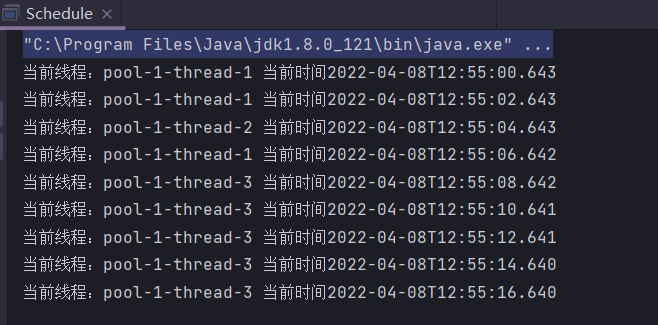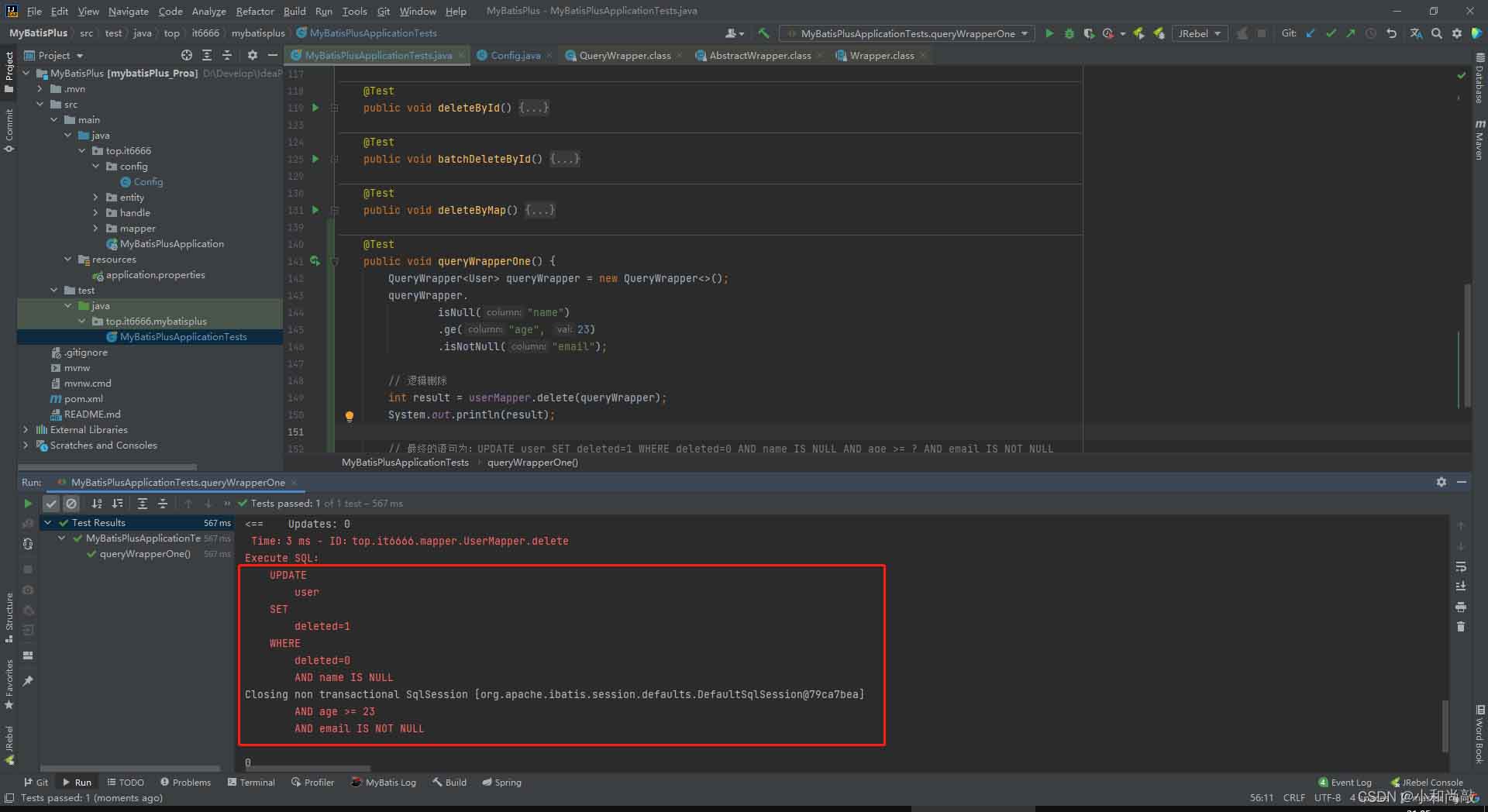MyBatis的动态SQL是基于OGNL表达式的,它可以帮助我们方便的在SQL语句中实现某些逻辑,下面这篇文章主要给大家介绍了关于Mybatis超级强大的动态SQL语句的相关资料,需要的朋友可以参考下
单表查询操作
参数占位符#{}和${}
- #{}:相当于JDBC里面替换占位符的操作方式(#{}->“”).相当于预编译处理(预编译处理可以防止SQL注入问题)
- ${}:相当于直接替换(desc这种关键字),但这种不能预防SQL注入
select * from userinfo where username='${name}'
${} VS #{}
- ${}是直接替换,#{}是预执行;
- ${} 会存在SQL 注入问题,#{}不存在SQL注入问题
SQL 注入
UserInfo userInfo = userMapper.login("admin","' or 1='1");
mysql> select * from userinfo where username = 'admin' and password ='' or 1='1';
+----+----------+----------+-------+---------------------+---------------------+-------+
| id | username | password | photo | createtime | updatetime | state |
+----+----------+----------+-------+---------------------+---------------------+-------+
| 1 | admin | admin | | 2021-12-06 17:10:48 | 2021-12-06 17:10:48 | 1 |
+----+----------+----------+-------+---------------------+---------------------+-------+
1 row in set (0.00 sec)
like模糊查询
用concat进行字符串拼接
<select id="findListByName" resultMap="BaseMap">
select * from userinfo where username like concat('%',#{name},'%')
</select>
多表查询操作
一对一多表查询
一对一的多表查询:需要设置resultMap中有个association标签,property对应实体类的属性名,resultMap是关联属性的字典映射(必须要设置),columnPrefix是设置前缀,当多表查询中有相同的字段的话,就会报错
<?xml version="1.0" encoding="UTF-8"?>
<!DOCTYPE mapper PUBLIC "-//mybatis.org//DTD Mapper 3.0//EN" "http://mybatis.org/dtd/mybatis-3-mapper.dtd">
<mapper namespace="com.example.demo.mapper.ArticleInfoMapper">
<resultMap id="BaseMap" type="com.example.demo.model.ArticleInfo">
<!--主键-->
<id property="id" column="id"></id>
<!--普通属性-->
<result property="updatetime" column="updatetime"></result>
<result property="title" column="title"></result>
<result property="content" column="content"></result>
<result property="createtime" column="createtime"></result>
<result property="rcount" column="rcount"></result>
<!--自定义对象属性-->
<association property="user"
resultMap="com.example.demo.mapper.UserMapper.BaseMap"
columnPrefix="u_">
</association>
</resultMap>
<select id="getAll" resultType="com.example.demo.model.ArticleInfo">
select a.*,u.id from articleinfo as a left join userinfo as u on a.uid = u.id;
</select>
<select id="getAll2" resultMap="BaseMap">
select a.*,u.id as u_id ,u.username as u_username,u.password as u_password from articleinfo as a left join userinfo as u on a.uid = u.id;
</select>
</mapper>
一对多多表查询
collection标签,用法同association
<resultMap id="BaseMapper2" type="com.example.demo.model.UserInfo">
<!--映射主键的)(表中主键和程序实体类中的主键)-->
<id column="id" property="id"></id>
<!--普通列的映射-->
<result column="username" property="name"></result>
<result column="password" property="password"></result>
<result column="photo" property="photo"></result>
<result column="createtime" property="createtime"></result>
<result column="updatetime" property="updatetime"></result>
<!--外部关联-->
<collection property="artlist" resultMap="com.example.demo.mapper.ArticleInfoMapper.BaseMap"
columnPrefix="a_"></collection>
</resultMap>
<select id="getAll3" resultMap="BaseMapper2">
select u.*,a.id a_id,a.title a_title from userinfo u left join articleinfo a on u.id=a.uid
</select>
动态SQL使用
if标签
注册分为必填和选填,如果在添加用户的时候有不确定的字段传入,就需要使用动态标签if来判断
//p是传递过来的参数名,并不是表的字段名
<insert id="add3">
insert into userinfo(username,password,
<if test="p!=null">
photo,
</if>
state)
values(#{username},#{password},
<if test="p!=null">
#{p},
</if>
#{state})
</insert>
trim标签
trim标签的属性
- prefix:表示整个语句块,以prefix的值作为前缀
- suffix:表示整个语句块,以suffix的值作为后缀
- prefixOverrides:去掉最前面的符合条件的字符
- suffixOverrides:去掉最后面的符合条件的字符
<insert id="add4">
insert into userinfo
<trim prefix="(" suffix=")" suffixOverrides=",">
<if test="username!=null">
username,
</if>
<if test="password!=null">
password,
</if>
<if test="p!=null">
photo,
</if>
<if test="state!=null">
state,
</if>
</trim>
values
<trim prefix="(" suffix=")" suffixOverrides=",">
<if test="username!=null">
#{username},
</if>
<if test="password!=null">
#{password},
</if>
<if test="p!=null">
#{p},
</if>
<if test="state!=null">
#{state},
</if>
</trim>
</insert>
where标签
where标签首先可以帮助我们生成where,如果有查询条件,那么就生成where,如果没有查询条件,就会忽略where
其次where标签可以判断第一个查询条件前面有没有and,如果有则会删除
<select id="login2" resultType="com.example.demo.model.UserInfo">
select * from userinfo
<where>
<if test="username!=null">
username=#{username}
</if>
<if test="password!=null">
and password=#{password}
</if>
</where>
</select>
set标签
和where的使用基本一样
可以自动帮助你处理最后一个逗号,并且自动写set
<update id="update" parameterType="map">
update blog
<set>
<if test="newTitle != null">
title=#{newTitle},
</if>
<if test="newAuthor != null">
author=#{newAuthor},
</if>
<if test="newViews != null">
views = #{newViews}
</if>
</set>
<where>
<if test="id != null">
id=#{id}
</if>
<if test="title != null">
and title=#{title}
</if>
<if test="author != null">
and author=#{author}
</if>
<if test="views != null">
and views = #{views}
</if>
</where>
</update>foreach标签
- foreach属性:
- collection:参数集合的名字
- item:给接下来要遍历的集合起的名字
- open:加的前缀是什么
- close:加的后缀是什么
- separator:每次遍历之间间隔的字符串
<delete id="dels">
delete from userinfo where id in
<foreach collection="list" item="item" open="(" close=")" separator="," >
#{item}
</foreach>
</delete>
到此这篇关于Mybatis详解动态SQL以及单表多表查询的应用的文章就介绍到这了,更多相关Mybatis动态SQL内容请搜索编程学习网以前的文章希望大家以后多多支持编程学习网!
本文标题为:Mybatis详解动态SQL以及单表多表查询的应用


- JSP 制作验证码的实例详解 2023-07-30
- Springboot整合minio实现文件服务的教程详解 2022-12-03
- Java实现顺序表的操作详解 2023-05-19
- Spring Security权限想要细化到按钮实现示例 2023-03-07
- SpringBoot使用thymeleaf实现一个前端表格方法详解 2023-06-06
- Java中的日期时间处理及格式化处理 2023-04-18
- 深入了解Spring的事务传播机制 2023-06-02
- 基于Java Agent的premain方式实现方法耗时监控问题 2023-06-17
- ExecutorService Callable Future多线程返回结果原理解析 2023-06-01
- JSP页面间传值问题实例简析 2023-08-03









